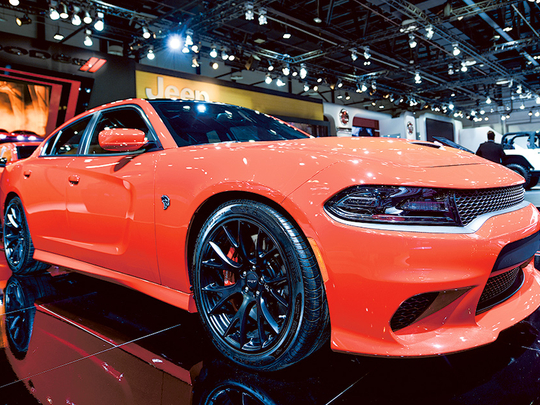
Dubai: Marco Tronchi, the regional head of FCA (Fiat Chrysler Automobiles) is going into battle … and he’s bringing in Hellcats and Vipers to the fight.
The first shipments of the Dodge Charger Hellcat — packing a wallop at 707-hp — have been allocated for this region. And then there is the 2016 Dodge Viper — a handcrafted thing of beauty powered by an 8.4-litre V10 engine belting out 645-hp.
“My enemy in the Gulf markets are the other US brands,” said Tronchi, who took over in April and immediately set out to revamp regional operations. “And my aim is to build up Dodge, Chrysler and RAM numbers to the same ratio as in the US vis-a-vis the competition.
“In the US, the ratio between Ford and our brands is 10:8 while in this region, it’s 10:2. I find that ridiculous, but also gives me scope to grow.”
That explains the focus on bulking up the Dodge portfolio, which as it is currently makes up 50 per cent of the volumes at the regional operations. “You cannot hope to raise the ratio offering customers just a few model choices.
“I also found that earlier the Viper sold here cost $15,000 [Dh55,050] more than in the US. Again, that’s not done. The new Viper will now have a pricing similar to the US — it’s been enforced.” (In America, the 2016 version starts from $87,800.) As such, the Dodge Charger and Challenger have become common sightings on UAE roads, so much so they are even doubling up as family cars. Currently, FCA’s regional volumes are built around the Dodge, the Grand Cherokee and the 300M.
“But that’s not the way I want it — we have got eight individual brands that need working on to expand the customer base,” said Tronchi. “With the Jeep I see both the Renegade and the Wrangler having great potential for us.
“A key model for growth next year will be the Chrysler 200C, which will be available from January.”
Incidentally, the American brands in the FCA regional line-up make up 97 per cent of the trading profits. “As an Italian, I would love if the Alfa Romeo and the Fiat models could get more out of the Gulf,” said Tronchi. “But these markets love the American brands and in spirit are closer to the American consumer.
“The Fiat and Alfa Romeo only have marginal volumes between them from the region. Since that’s the case, I will do whatever it is that will make more money for the company. If it’s by selling more of our American brands, so be it.”
The internal reorganisation had to with creating a sharper focus on brands, on raising FCA models’ exposure in fleets and on Saudi Arabia, which accounts for around 50 per cent of the carmaker’s volumes from the territory. Tronchi reckons a well-defined structure will open up more possibilities in Saudi Arabia.
“That market is also 50 per cent of the Gulf’s automotive market, making up more than 1 million annually,” said Tronchi. “We can do much more out of there.
“The Middle East is about two clusters — you have the Gulf markets where the preference is for automatic gears, petrol engines and large SUVs. The other cluster is the Levant and where buyer preferences are more in step with European sentiments.
“Within the regional structure, we have to localise the way we treat each individual market. We have started to get our acts together to get where we should be.”
FCA is looking to close this year with regional volumes of 30,000 units.
Alfa Romeo
A renewed model line-up could bring the Italian marque Alfa Romeo the kind of numbers it should rightfully have in the Gulf, according to a top official at FCA.
“In the next three years we should see some gains from changes to the range,” said Marco Tronchi, President and Managing Director at FCA Middle East. “The Giulia will be here early next year and that’s to be followed by the SUV.
“But it’s not just new models that will define how we can get more out of the Alfa Romeo in the region. We are working on the strategy and which should be ready next year.”












